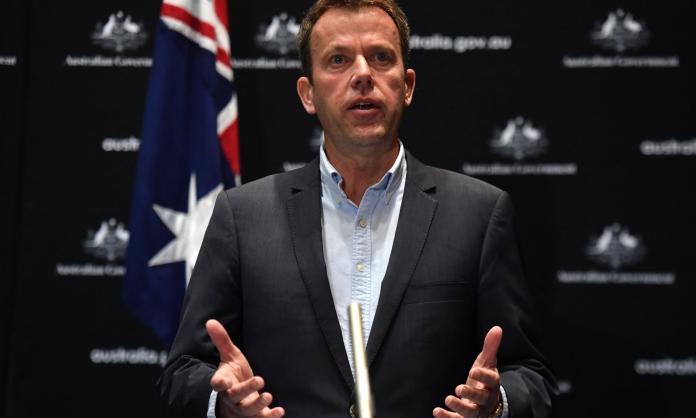The federal government’s so-called relief package for higher education is a con. It will do nothing to alleviate the funding crisis currently confronting Australian universities. Nor will it aid international students, who are increasingly being left destitute. Instead, it will deliver a windfall for Australia’s private education providers.
The package provides for 20,000 places in short-term (one semester) courses in nursing, teaching, health, IT and science. While it guarantees $18 billion in funding already committed for domestic students, it doesn’t address the loss of international student revenue. And the waiving of $100 million in fees and regulatory costs will be more of a boost for private education providers than it will universities.
Announcing the package on 12 April, federal education minister Dan Tehan claimed that the plan will “help Australians who have lost their job or are looking to retrain to use their time studying nursing, teaching, counselling, allied health or other areas considered national priorities”. But it’s not the unemployed who will be the prime beneficiaries – it’s big business. “These reforms will help universities pivot towards a closer alignment of domestic industry”, Tehan said when announcing the reforms.
It follows a long-term trend in Australian higher education, pursued by both Labor and Liberal governments, to better align higher education with the needs of big business. Since 1989, when a Labor government introduced the Higher Education Contribution Scheme fees for degrees, higher education participation rates have more than doubled. Increasingly, employers expect graduates to have a skill set tailored to business needs. Universities have been more than obliging, transforming themselves into degree factories run along business lines.
According to government figures, 1.5 million students were enrolled in higher education institutions in 2018, including 400,000 international students. Between 2008 and 2017, revenues from fee paying overseas students increased from nearly $19 billion to $32 billion. In 2017, these fees accounted for nearly a quarter of universities’ income.
Federal government regulations stipulate that fees for international students in onshore programs must be at least as high as those for domestic students. But there is no upper limit to the fees that can be charged. Typically, international students pay three times the course fees of domestic students. They have become “cash cows”, subsidising domestic students’ education and generating handsome profits for private education providers.
While higher education institutions receive two-thirds of revenues generated from international students, half of those students are enrolled in vocational education and training (VET) programs, schools, English Language Intensive Courses for Overseas Students (ELICOS) and non-award courses. The VET sector has been rapidly privatised over the last decade.
Moreover, Australian universities are increasingly outsourcing their ELICOS and preparatory courses to private education providers. Navitas has established 14 colleges to deliver pathway programs for Australian universities and Kaplan has established another two. Both companies have operations that span the globe. University partnerships delivered $315 million in revenue to Navitas in 2018, demonstrating that while Australian universities may be ostensibly public institutions, privatised delivery of their programs is big business.
With the imposition of a travel ban on China in February, and current travel bans expected to continue into the next semester, this business model is now in a profound crisis. Universities Australia, the industry association representing 40 Australian universities, estimates that universities’ collective revenue will decline by up to $4.6 billion this year. And prime minster Scott Morrison’s “go home” message to international students has bluntly confirmed that the days of universities relying on international student revenue are over.
Consequently, universities have been lobbying the federal government for a bailout package. But what Tehan has delivered will offer little relief. Competing with the universities are 137 other, mostly private, education institutions, delivering primarily VET (certificate) and diploma courses. Educators in these private institutions are paid considerably less than their university academic counterparts and are highly casualised. It’s not hard to guess which institutions will be best placed to secure contracts for the delivery of the 20,000 subsidised places in short courses on offer.
The guarantee of current levels of funding for domestic students gives universities little relief. With employment opportunities having dried up, there is little incentive for domestic students to abandon their studies. However, the situation is markedly different for international students who have no access to welfare and, faced with loss of employment, nowhere to turn to cover their rent and daily living expenses. For many, an immediate return flight home is also not an option, leaving them destitute.
Having been passed over by the federal government, universities will be looking to make drastic savings. Already, they are talking about course cuts and job losses. Responding to Tehan’s announcement, Universities Australia chairwoman Deborah Terry told the ABC that she estimates 21,000 university jobs will go within the next six months.
The National Tertiary Education Union has slammed the package. Union national president Alison Barnes told the ABC: “This will not plug the gaping hole in university finances left by the drop in international student income”. Yet at the same time, the NTEU has entered negotiations with the Universities Australia, in which pay and conditions are up for grabs with no mandate from its membership.
While Australian universities demand their pound of flesh, NTEU members are starting to organise a desperately needed fight back. As the old union saying goes, “If you don’t fight, you lose!”
Nick Everett is a member of the Murdoch University NTEU branch committee.








